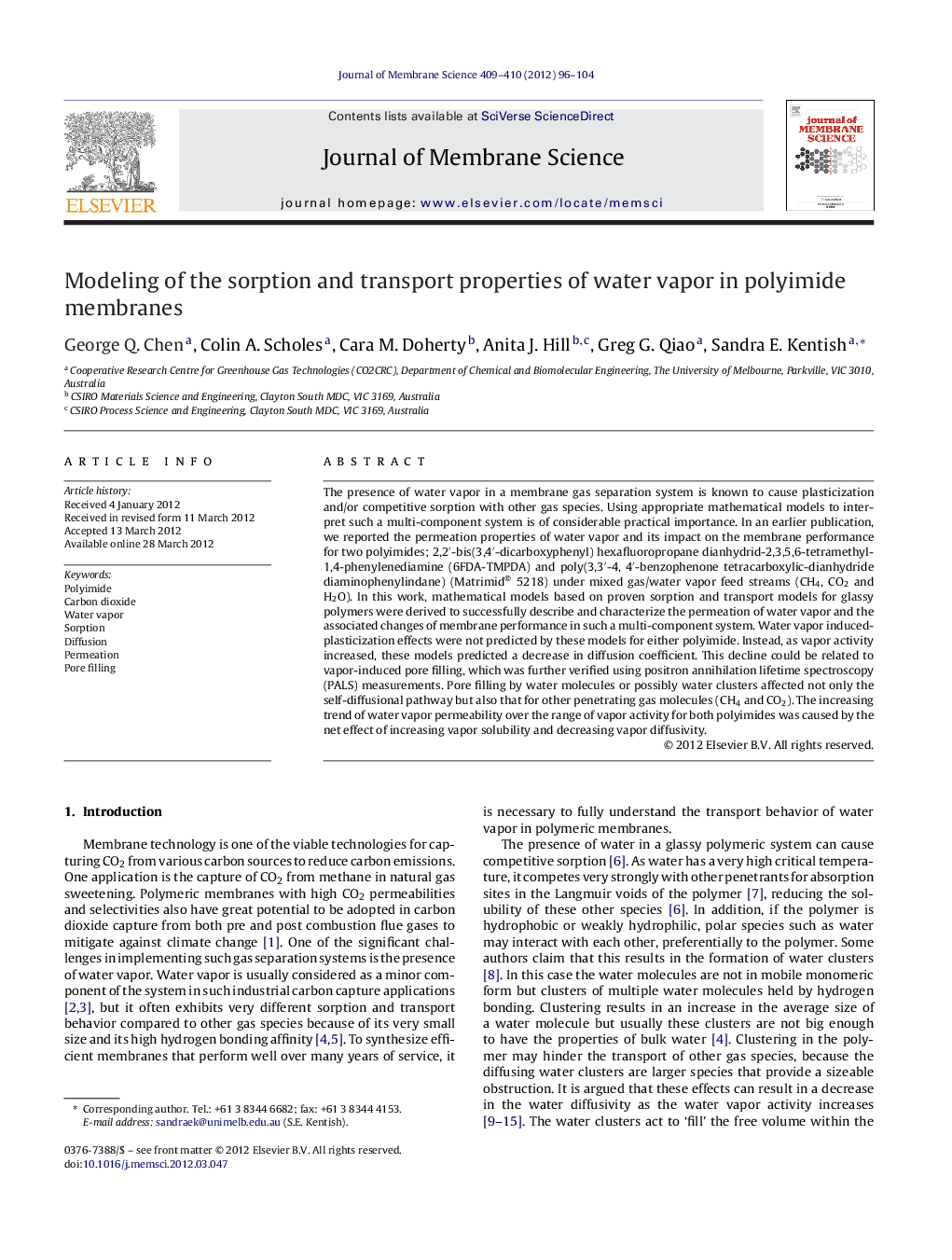| Article ID | Journal | Published Year | Pages | File Type |
|---|---|---|---|---|
| 634927 | Journal of Membrane Science | 2012 | 9 Pages |
The presence of water vapor in a membrane gas separation system is known to cause plasticization and/or competitive sorption with other gas species. Using appropriate mathematical models to interpret such a multi-component system is of considerable practical importance. In an earlier publication, we reported the permeation properties of water vapor and its impact on the membrane performance for two polyimides; 2,2′-bis(3,4′-dicarboxyphenyl) hexafluoropropane dianhydrid-2,3,5,6-tetramethyl-1,4-phenylenediamine (6FDA-TMPDA) and poly(3,3′-4, 4′-benzophenone tetracarboxylic-dianhydride diaminophenylindane) (Matrimid® 5218) under mixed gas/water vapor feed streams (CH4, CO2 and H2O). In this work, mathematical models based on proven sorption and transport models for glassy polymers were derived to successfully describe and characterize the permeation of water vapor and the associated changes of membrane performance in such a multi-component system. Water vapor induced-plasticization effects were not predicted by these models for either polyimide. Instead, as vapor activity increased, these models predicted a decrease in diffusion coefficient. This decline could be related to vapor-induced pore filling, which was further verified using positron annihilation lifetime spectroscopy (PALS) measurements. Pore filling by water molecules or possibly water clusters affected not only the self-diffusional pathway but also that for other penetrating gas molecules (CH4 and CO2). The increasing trend of water vapor permeability over the range of vapor activity for both polyimides was caused by the net effect of increasing vapor solubility and decreasing vapor diffusivity.
► A multi-component model for gas permeation through a glassy polymer is developed. ► The model accounts for both membrane swelling and pore filling induced by water. ► The model predicts decreasing water diffusivity due to membrane pore filling. ► PALS analysis supported the pore filling conclusion.
